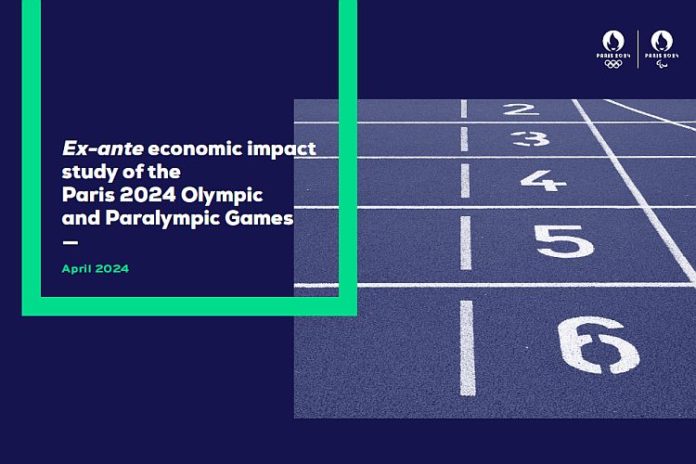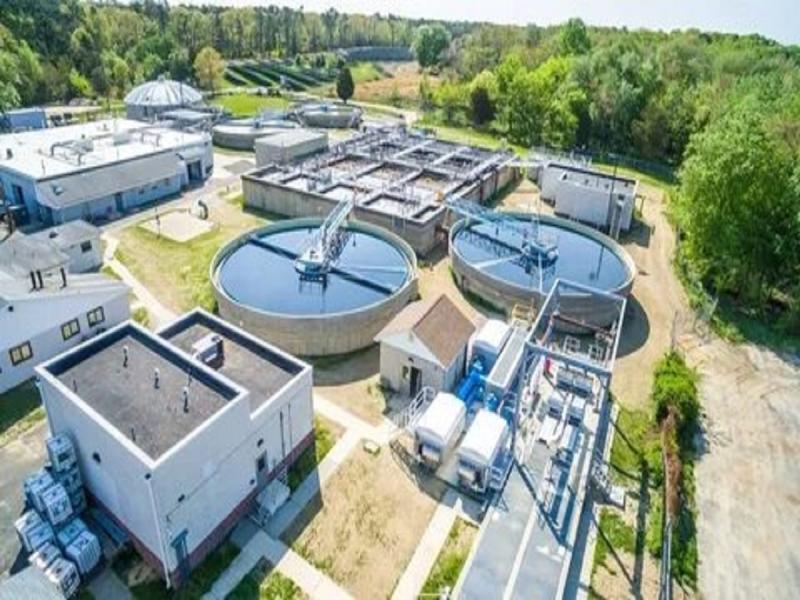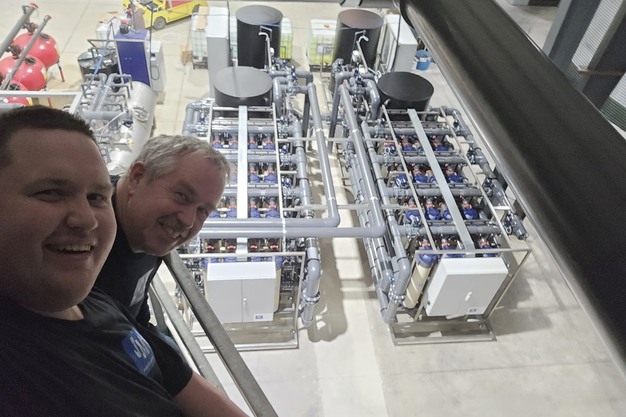Water Heater Market to Surpass USD 44.10 Billion by 2032 | – GlobeNewswire

Global Water Heater Market Report: An Analysis of Growth, Innovation, and Alignment with Sustainable Development Goals (SDGs)
Executive Summary: Market Projections and Sustainability Imperatives
The global water heater market was valued at USD 30.65 billion in 2024 and is forecast to reach USD 44.10 billion by 2032, reflecting a compound annual growth rate (CAGR) of 4.70% from 2025 to 2032. This expansion is intrinsically linked to the global pursuit of the Sustainable Development Goals (SDGs), particularly in providing access to clean energy and promoting sustainable infrastructure. The industry’s trajectory is shaped by a growing demand for energy-efficient solutions that contribute to SDG 7 (Affordable and Clean Energy) and SDG 11 (Sustainable Cities and Communities). Innovations in smart technology and renewable energy integration are positioning the market as a key enabler of responsible consumption and climate action.
Market Drivers and SDG Alignment
Several key factors are driving market growth, each closely aligned with specific Sustainable Development Goals:
- Infrastructure Development and Urbanization: The expansion of residential and commercial infrastructure, especially in emerging economies, increases the demand for essential appliances like water heaters. This directly supports SDG 9 (Industry, Innovation, and Infrastructure) and improves living standards, contributing to SDG 11 (Sustainable Cities and Communities).
- Consumer Demand for Hygiene and Comfort: A rising global middle class and increased awareness of hygiene standards drive the need for reliable hot water, a fundamental component of SDG 6 (Clean Water and Sanitation).
- Regulatory Frameworks and Green Technologies: Government incentives promoting energy-efficient and green building technologies are accelerating the adoption of advanced water heaters. This push directly addresses SDG 12 (Responsible Consumption and Production) and SDG 13 (Climate Action) by mandating lower carbon footprints.
- Technological Innovation (IoT): The integration of IoT in smart water heaters allows for remote control and energy optimization, fostering innovation under SDG 9 and promoting efficient energy use as per SDG 7.
Market Segmentation Analysis: A Focus on Sustainability
By Product
The electric segment dominated the market with an approximate 51% revenue share in 2024. While convenient, the sustainability of electric heaters is dependent on the grid’s energy source. The growing adoption of solar water heaters, however, represents a significant shift towards SDG 7 (Affordable and Clean Energy), offering a decentralized and renewable energy solution for water heating.
By Technology
Storage tank models led the market in 2024 due to their reliability and lower initial cost. However, the industry is witnessing a strong trend towards more efficient alternatives that align with sustainability targets.
- Tankless and Hybrid Models: These technologies are gaining popularity for their energy-saving capabilities, directly contributing to SDG 7 and SDG 12 by reducing energy waste and promoting resource efficiency.
- Advanced Insulation: Manufacturers are investing in superior insulation to minimize standby heat loss in storage tanks, a key step towards achieving the efficiency targets outlined in SDG 12.
By Application
The residential segment accounted for the majority of market revenue in 2024. The installation of modern, efficient water heaters in homes is crucial for building sustainable communities (SDG 11) and ensuring access to sanitation (SDG 6). The commercial sector, particularly healthcare and hospitality, also drives demand for reliable hot water systems to maintain stringent hygiene standards, further reinforcing SDG 6.
By Capacity
The 30–100 liters segment held a significant market share in 2024, catering to medium-sized households. The selection of an appropriately sized unit is critical for energy efficiency, preventing the unnecessary energy consumption associated with oversized models and thus supporting SDG 12 (Responsible Consumption and Production).
Regional Analysis: Asia-Pacific’s Role in Advancing the SDGs
In 2024, the Asia-Pacific region commanded the largest market share at 35.49%. This growth is fueled by rapid urbanization and rising disposable incomes, which are increasing demand for appliances that support modern living standards. Government initiatives in the region promoting energy conservation are accelerating the adoption of advanced water heaters, aligning market growth with national commitments to SDG 7 and SDG 13. This trend transforms basic infrastructure development into a pathway for sustainable, low-carbon communities.
Recent Developments: Industry Actions Toward Sustainability
Key industry players are actively innovating to meet global sustainability targets:
- June 2025: A.O. Smith Corporation’s launch of the H2Science A-Series with Wi-Fi connectivity exemplifies progress under SDG 9 (Innovation) by enabling consumers to optimize energy use, directly supporting SDG 7.
- December 2024: Racold’s production expansion for solar water heaters in India, supported by government subsidies, is a direct contribution to increasing the share of renewable energy in the final consumption mix, a core target of SDG 7.
Key Market Dynamics and Contributions to SDGs
- Energy Efficiency Regulations: Stricter global standards are driving the replacement of old units, accelerating progress towards SDG 7 and SDG 12.
- Shift Toward Renewable Energy: Growing investment in solar water heaters is transforming the market into a key contributor to SDG 7 and SDG 13.
- Smart IoT Integration: App-based controls enhance user convenience while promoting responsible energy consumption, aligning with SDG 12.
- Residential Construction in Emerging Economies: New housing creates demand for water heating systems, providing an opportunity to install energy-efficient models from the outset and build towards SDG 11.
- Global Electrification Trend: The move towards electric appliances supports decarbonization efforts, especially when powered by renewable sources, contributing to SDG 7 and SDG 13.
Key Companies
- A.O. Smith
- Robert Bosch LLC
- Ariston Thermo SpA
- Rheem Manufacturing Company
- Rinnai Corporation
- Bradford White Corporation
- NORITZ Corporation
- Whirlpool Corporation
- Westinghouse Electric Corporation
- Bajaj Electricals Ltd.
1. Which SDGs are addressed or connected to the issues highlighted in the article?
SDG 7: Affordable and Clean Energy
- The article extensively discusses energy efficiency, the development of solar water heaters, and the shift towards electric models as part of a global electrification trend. It highlights “Energy Efficiency Regulations,” a “Strong Shift Toward Renewable Energy Systems,” and technologies designed to “optimize energy usage,” all of which are central to SDG 7.
SDG 9: Industry, Innovation, and Infrastructure
- The text points to “infrastructure development,” the “renovation of aging infrastructure,” and significant technological advancements. Innovations such as “smart water heaters and remote-control systems,” “IoT-enabled devices,” “hybrid electric heat pump water heaters,” and “tankless & hybrid models” are key themes, directly aligning with the goal of building resilient infrastructure and fostering innovation.
SDG 11: Sustainable Cities and Communities
- The article links the market growth to “booming urbanization,” “green building technologies,” and “booming residential construction in emerging economies.” The focus on making household appliances like water heaters more efficient and sustainable, especially in urban settings, connects directly to making cities more sustainable and ensuring access to basic services.
SDG 12: Responsible Consumption and Production
- The article emphasizes a shift in consumer and manufacturer behavior towards sustainability. Phrases like “eco-conscious end user,” “stricter global efficiency standards,” and the growing popularity of models with a lower “carbon footprint” reflect a move towards more responsible consumption and production patterns.
SDG 6: Clean Water and Sanitation
- While the primary focus is on heating water, the article underlines the role of water heaters in fulfilling “daily requirements for bathing, cleaning, and cooking” and meeting rising “hygiene standards.” Access to hot water is a component of adequate sanitation and hygiene.
SDG 13: Climate Action
- The article mentions the industry’s focus on lowering the “carbon footprint” and the role of “government regulatory incentives” and “subsidies” in promoting sustainable technologies like solar water heaters. This reflects measures taken to combat climate change by reducing energy consumption and promoting renewable energy sources.
2. What specific targets under those SDGs can be identified based on the article’s content?
-
SDG 7: Affordable and Clean Energy
- Target 7.2: By 2030, increase substantially the share of renewable energy in the global energy mix.
- The article supports this by highlighting the “Strong Shift Toward Renewable Energy Systems” and mentioning specific developments like Racold increasing its production capacity for “solar water heaters” and the rising investments in these technologies.
- Target 7.3: By 2030, double the global rate of improvement in energy efficiency.
- This is directly addressed through mentions of “Energy Efficiency Regulations Boosting Replacement Demand,” the development of “high-efficiency water heaters,” and smart features that allow consumers to “monitor and optimize energy usage.”
- Target 7.2: By 2030, increase substantially the share of renewable energy in the global energy mix.
-
SDG 9: Industry, Innovation, and Infrastructure
- Target 9.4: By 2030, upgrade infrastructure and retrofit industries to make them sustainable, with increased resource-use efficiency and greater adoption of clean and environmentally sound technologies and industrial processes.
- The article points to this target by discussing the “renovation of aging infrastructure,” the adoption of “green building technologies,” and the market shift towards “solar water heating technologies,” “tankless & hybrid models,” and “IoT Integration” for greater efficiency.
- Target 9.4: By 2030, upgrade infrastructure and retrofit industries to make them sustainable, with increased resource-use efficiency and greater adoption of clean and environmentally sound technologies and industrial processes.
-
SDG 11: Sustainable Cities and Communities
- Target 11.1: By 2030, ensure access for all to adequate, safe and affordable housing and basic services and upgrade slums.
- The article notes that water heaters have become a “necessity in homes” and an “essential appliance,” with demand driven by “booming urbanization” and “new housing developments,” particularly in emerging economies. This reflects the integration of basic services into housing.
- Target 11.1: By 2030, ensure access for all to adequate, safe and affordable housing and basic services and upgrade slums.
3. Are there any indicators mentioned or implied in the article that can be used to measure progress towards the identified targets?
-
For Target 7.2 (Increase renewable energy share):
- Implied Indicator: The market share and production capacity of solar water heaters.
- The article provides a specific example: “Racold (India) increased its production capacity at a plant for solar water heaters in Maharashtra.” This increase in production capacity serves as a direct measure of the growing adoption of renewable energy technology in the sector.
- Implied Indicator: The market share and production capacity of solar water heaters.
-
For Target 7.3 (Improve energy efficiency):
- Implied Indicator: The adoption rate of high-efficiency and smart water heaters.
- The article mentions that “stricter global efficiency standards are pushing consumers to replace older units with high-efficiency water heaters.” The market growth of “hybrid electric heat pump water heaters,” “tankless & hybrid models,” and “Smart Water Heaters with IoT Integration” can be tracked as an indicator of progress.
- Implied Indicator: The adoption rate of high-efficiency and smart water heaters.
-
For Target 9.4 (Upgrade infrastructure and adopt clean technologies):
- Implied Indicator: Reduction in carbon footprint per unit.
- The article states that manufacturers are “focusing on energy usage and carbon footprint lower stand.” While not quantified, the industry’s focus on this metric implies it is a key performance indicator for measuring the sustainability of new technologies.
- Implied Indicator: Reduction in carbon footprint per unit.
-
For Target 11.1 (Access to basic services):
- Implied Indicator: Penetration rate of water heaters in residential households.
- The article highlights that the “residential segment accounted for a major share of the global water heater market revenue” due to “booming urbanization and a rapidly growing population.” Tracking the installation of these “essential appliances” in new and existing housing, especially in “emerging economies,” would measure access to this basic service.
- Implied Indicator: Penetration rate of water heaters in residential households.
4. SDGs, Targets, and Indicators Analysis
| SDGs | Targets | Indicators (Mentioned or Implied in Article) |
|---|---|---|
| SDG 7: Affordable and Clean Energy | 7.2: Increase substantially the share of renewable energy in the global energy mix.
7.3: Double the global rate of improvement in energy efficiency. |
– Market share and production capacity of solar water heaters. – Adoption rate of high-efficiency, tankless, hybrid, and smart (IoT-enabled) water heaters. – Investment in renewable energy systems for water heating. |
| SDG 9: Industry, Innovation, and Infrastructure | 9.4: Upgrade infrastructure and retrofit industries to make them sustainable, with increased resource-use efficiency and greater adoption of clean and environmentally sound technologies. | – Rate of replacement of old water heaters with new, efficient models. – Market penetration of innovative technologies (IoT, hybrid, tankless). – Reduction in carbon footprint from water heating appliances. |
| SDG 11: Sustainable Cities and Communities | 11.1: Ensure access for all to adequate, safe and affordable housing and basic services. | – Penetration rate of water heaters in residential units, especially in urban areas and emerging economies. – Demand for water heaters in new residential construction projects. |
| SDG 12: Responsible Consumption and Production | 12.2: Achieve the sustainable management and efficient use of natural resources. | – Consumer shift towards “eco-conscious” and energy-efficient products. – Industry response to “stricter global efficiency standards.” |
| SDG 6: Clean Water and Sanitation | 6.2: Achieve access to adequate and equitable sanitation and hygiene for all. | – Increased access to hot water for daily hygiene (bathing, cleaning). – Demand for reliable hot water systems in healthcare and hospitality to meet hygiene standards. |
| SDG 13: Climate Action | 13.2: Integrate climate change measures into national policies, strategies and planning. | – Implementation of government subsidies and regulatory incentives for green technologies (e.g., solar heaters). – Industry focus on lowering the “carbon footprint” of products. |
Source: globenewswire.com

What is Your Reaction?
 Like
0
Like
0
 Dislike
0
Dislike
0
 Love
0
Love
0
 Funny
0
Funny
0
 Angry
0
Angry
0
 Sad
0
Sad
0
 Wow
0
Wow
0











































































